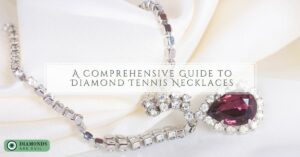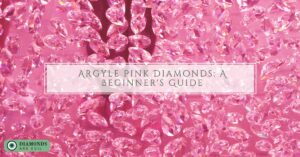The diamond world is one of the most fascinating, diverse and richest content available today. It has a lot to learn and know, there is a long and ancient tradition alongside innovation and updates and of course the view on diamonds, the mood they cause among quite a few people and the sense of missing out on which no one can ever get very close to real diamonds. Anyone who chooses to become a diamond and engage in a professional and serious field needs to learn and know quite a bit. Whether he does it in various organized courses and studies or while working and acquiring experience – he must prepare to become acquainted with new concepts, learn about a new content world right from the start and slowly topics will begin to work out in his mind and mind and he will understand how things work and what numbers, shapes, Color guided. The following is a preliminary guide that can be used as a diamond starting a moment before he takes his initial steps in the field of diamonds.
The diamond guide for beginners – What is a Diamond?
The diamond is considered to be a very hard material, the hardest in nature today. It is made of pure, pure carbon and is basically a mineral. In nature, the diamond is created in the inner layers of the earth, at a depth of over 200 km under special conditions of pressure and temperature – a pressure of about 60 atmospheres (for comparison – the pressure on the earth is 1 atmosphere) and a temperature that ranges from 1200-1500 ° C. Over time, and with various shifts of slabs and rocks beneath the surface of the earth’s bark, the diamond strata reach mining areas closer to the surface and from where they are carved by man. The diamonds are colorless stones to the human eye though profoundly discernible with professional tools you can see in light shades ranging from yellow to brown inside the diamond. In recent decades, an innovative laboratory diamond production method has been used under controlled conditions. These are actually synthetic diamonds that have been tested and scrutinized closely and that their quality is similar to that of natural diamonds and it is very difficult to distinguish between them. Because there is a strong desire to obtain diamonds all over the world, in problematic areas of law or anarchy-dominated areas, diamonds have become a source of serious controversy that often results in wars, deaths and mining attempts under very difficult terrain conditions. Films produced in Hollywood about the blood diamonds across Africa reflect a harsh and sad truth about the diamond industry and the cheapness of human life in many countries in the face of the prospect of a diamond. Laboratory production methods are a humane, scientifically based and research method and such that diamond prices can be lowered and thus stop the fighting and death that goes hand in hand with the diamond world.
How is diamond quality measured?
Whenever a person purchases a diamond, whether it is a diamond or a diamond that is inlaid with a diamond such as: diamond necklace, diamond earrings, tennis bracelet or diamond rings – will accompany you to purchase a gemological certificate. This certificate is produced in a Gemological Laboratory, which is the official and scientifically and legally competent body to assess gems, including diamonds. The certificate is the diamond’s identity card and its characteristics and features will be listed there. The information in the gemological certificate is determined by international and universal criteria so that anyone in the diamond field can read this information and understand exactly what the certificate signer intended. The features that will appear in the gemological certificate are – the degree of diamond cleanliness, diamond color, symmetry, shape, shine and degree of light reflectance from the diamond surface and additional features if available. Each of these features has a range of options or agreed upon signs that can be used to express what is right for each diamond and diamond. It is very important to keep the gemological certificate at hand.
Production of diamonds in the laboratory
As mentioned, these are relatively new production methods, which have been devised for a number of reasons and considerations. First, science is moving forward and a host of interesting, cutting-edge and up-to-date production methods can be proactively created. Second, high-quality diamond production in the lab can save very high costs today with the current production method that includes mining from the depths of the soil, transporting the raw material, long waiting and of course dealing with logistical issues such as protecting workers and significantly reducing mining areas all over the world. In addition, there is the humanitarian issue – which could put an end to the horrific wars that are happening directly due to diamond engagement. If diamonds can be produced in another way that does not exploit weak people and does not endanger anyone’s life – it is undoubtedly preferable to dozens of counters over any other method. And the last advantage is the economic one – laboratory production will reduce prices of over 50% of diamond prices as we know them today, which will help many people obtain diamonds and make them much more accessible. It is important for novice novices who are making their first steps in the field to understand the importance and urgency of speeding up research into artificial diamond production and thus bring an end to the great deal of suffering in the world. It is very important to promote these issues.
How do you get started in the field?
Unlike other areas of activity – the diamond sector is very important to study in a neat way. As a novice begins, it is important to the theoretical knowledge that you learn in orderly courses, since the work is actually based on this knowledge. Once you study, understand and internalize frontal studies – it is easier to make adjustments and receipts for fieldwork, to apply principles learned about diamonds encountered and understand how the entire diamond world works. The State of Israel is considered a superpower and a key country in this field and diamond businessmen come here throughout the year to buy and sell diamonds, catch up on news or meet with colleagues and other professionals to catch up, get more reviews, collaborate or be exposed to news in the field.
The studies are called gemology studies and have various content that is directly related to the diamonds themselves and also the peripheral issues that need to be known in order to understand the entire field in depth. As with any other course of study – here too it is important to pay attention to the institution that chooses to study, it is worthwhile to study the subject and make sure that the certificate obtained at the graduation is a formal certificate that gives the opportunity to engage in the field as a beginner, present it and that it will be familiar to the professionals already engaged in this world.
The far-reaching changes in the diamond world
Now is a very good time to enter the jewelry world, when it is already making fascinating changes and things that will change the face of things as they are known today. A few decades ago, no one in the field imagined the day when good, high-quality and beautifully artificial diamonds could be produced in the lab, and here we came to this day, and not only were the high-quality diamonds produced – they met all the criteria by which the real diamonds are tested. The diamond world is currently on a springboard and anyone who chooses to take part in it can itself be an integral part of the revolution not only locally but one that will give its signals on an international scale. A lot is at stake and the field itself welcomes new professionals, beginning diamonds, with a passion for the field and with a strong desire to make the next positive change.






